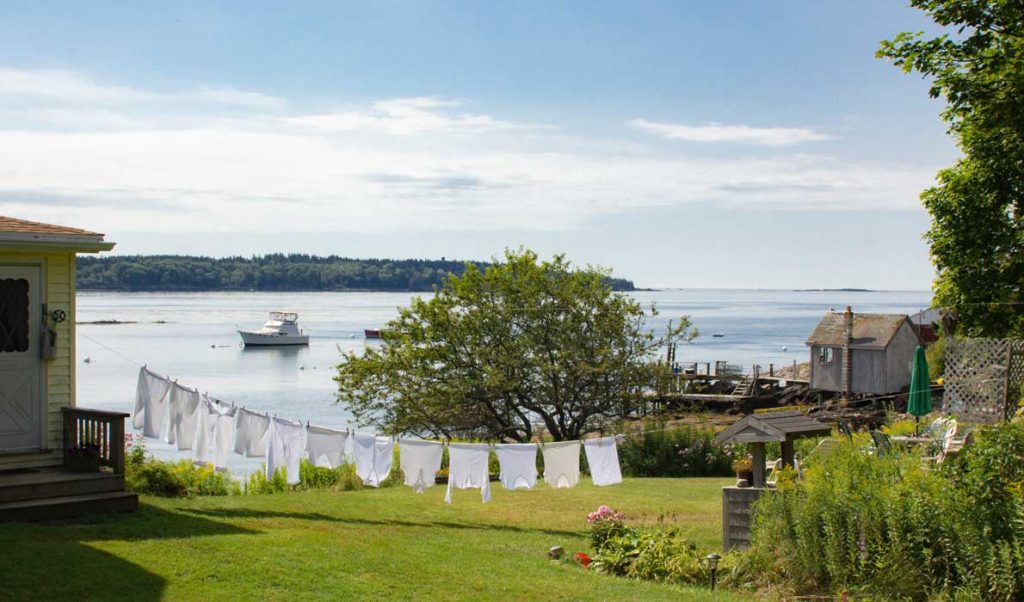Growing up in a small town in Western Maine, I’ve known the feeling of community my whole life, where Hannaford grocery aisles are meeting places and hot dogs are shared at Friday night football games.
But I came to know community in a different way when I moved to an island in Casco Bay and became a teacher in the two-room schoolhouse with just 15 students. There aren’t many unbridged islands left in Maine with a year-round population. Most of us islanders live amongst fewer than 200 year-round residents, and many are home to just 50 or 75 salty souls, all bound by their love of the ocean and its craggy shorelines.
Many make their living from the sea, and the rest can’t bear for it to be out of sight. As in all of Maine, the sense of community thrives here, but the physical borders of ledge and salt water, combined with our smallness, concentrates and magnifies its meaning. Being the teacher for pre-K through 2nd grade at the Long Island Elementary School has given me a chance to be a part of this meaning, and to learn how it is taught, shared, and remembered.
Island education is more than clapboarded schoolhouses and tiny class sizes. Our curriculum is filled with our community, and our community is enriched by our school.
It only took days of teaching to see that island classrooms naturally become a place to shape and witness the possible connections between humans of all ages, and where the curriculum is naturally shaped by community.
The first two weeks of February, my writing workshop focused on writing “love notes” to our seniors, and making posters to invite them to the Valentine’s Day lunch. The day of the big event, the whole school works together, cutting red and pink hearts for the windows, setting the table, and then passing out our homemade cards when our guests arrive.
Judy, our retired school secretary, returns Mondays to read with students, and kids hug her and greet her by name. Fifth graders help first graders practice their spelling words, crouching down with their little friends, the perfect teacher’s assistants.
In spring, when the winter wind finally begins to let go, they work together in the school garden, letting the youngest have the first turn with the hose, tending tomatoes, and building rock pathways. At recess, the patch of forest at the edge of the playground becomes a tiny town where everyone can play and everyone has a job, moving as a pack in their land of pretend.
Our classrooms are relics of the 1950s, with high ceilings and creaking wooden floors. An old chalkboard lines one wall, and 15-foot windows usher in the sun along the other. Most mornings, there’s a four-year-old struggling to get his foot into his sneaker, until a third grader comes along to assist.
Girls giggle in the bathroom: one is seven, the other is ten, but the years between them do nothing to keep them apart. There’s a kindergartener who will tell anyone who will listen that she read her homework book last night, all by herself, and at least three kids in grades far beyond her, high five her, knowing, and more importantly, caring, how proud she is.
I’ve learned from former students it has always been this way. That girls with tightly braided hair and freshly pressed white dresses skipped hand in hand across the grass just as the girls in leggings and Crocs do today. That boys have always planned to meet at the sand pile before school on their bikes. That they all mourned the day when the fifth graders graduate, joining the others who ride the ferry to the mainland each day. I like to imagine those now grown-up island middle schoolers, as I see them now, happily returning to their island home at the end of the school day, leaving the bustle of Portland on the horizon.
Watching them play from my classroom window, I can see a reflection of my own small-town life. I’ve always made my home where I knew I’d come to recognize and become a part of the rhythm of a place. I spent my childhood riding my bike to school, spent hours playing music and sports with the same people from second grade to senior year.
Just like any Mainer, I’d love to tell you where the best sledding hill is, or where to watch the sunset. Children of islands are growing up with an experience even more rare, and one worth exploring and sharing, during times when we are finding ourselves more isolated from our neighbors.
Each day I spend here, I grow more convinced that we are keeping something alive that is fading in so many places, even parts of our beloved Maine, where life is increasingly fast and loud. Island kids are more than classmates, and we are growing a community of caring and connected people, based on the shared experience of living in and loving the same tiny, rough, and beautiful place.
Katie Norton is the pre-K, first-, and second-grade teacher at the Long Island Elementary School.





